Like many garden perennials, hardy chrysanthemums benefit from being divided every few years. This is best done in late spring and helps to reduce overcrowding, reinvigorating the plant and providing you with a few extra plants. However, an equally easy propagation method, and one that produces far more plants, is by cuttings. Cuttings can be taken in the late spring and early summer, and are best taken in the morning before the heat of the day and when the shoots are turgid.
You may also like
How to propagate chrysanthemums
1
Immediately remove the lower leaves
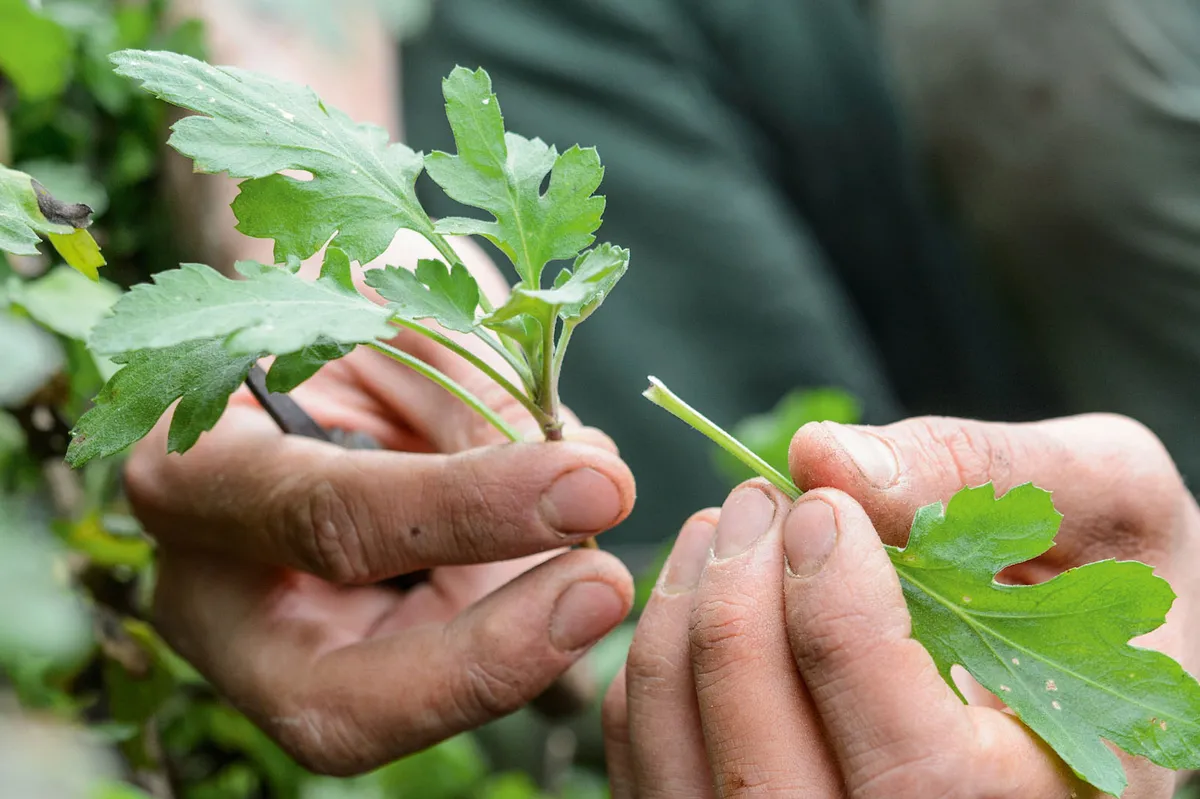
Do this to reduce transpiration (the evaporation of water from plant leaves).
2
Neaten them once inside
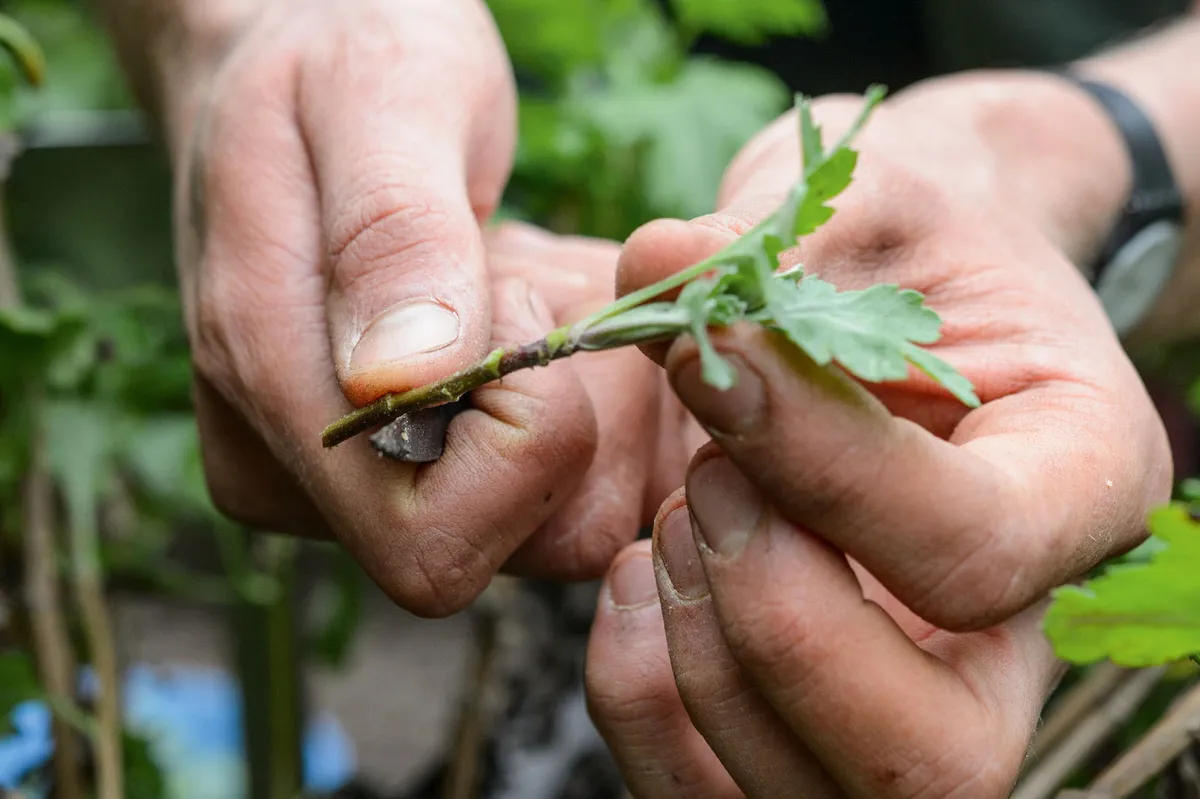
Once the cuttings have been safely brought into the potting shed or glasshouse they can be neatened up and stems shortened.
3
Make it a clean cut
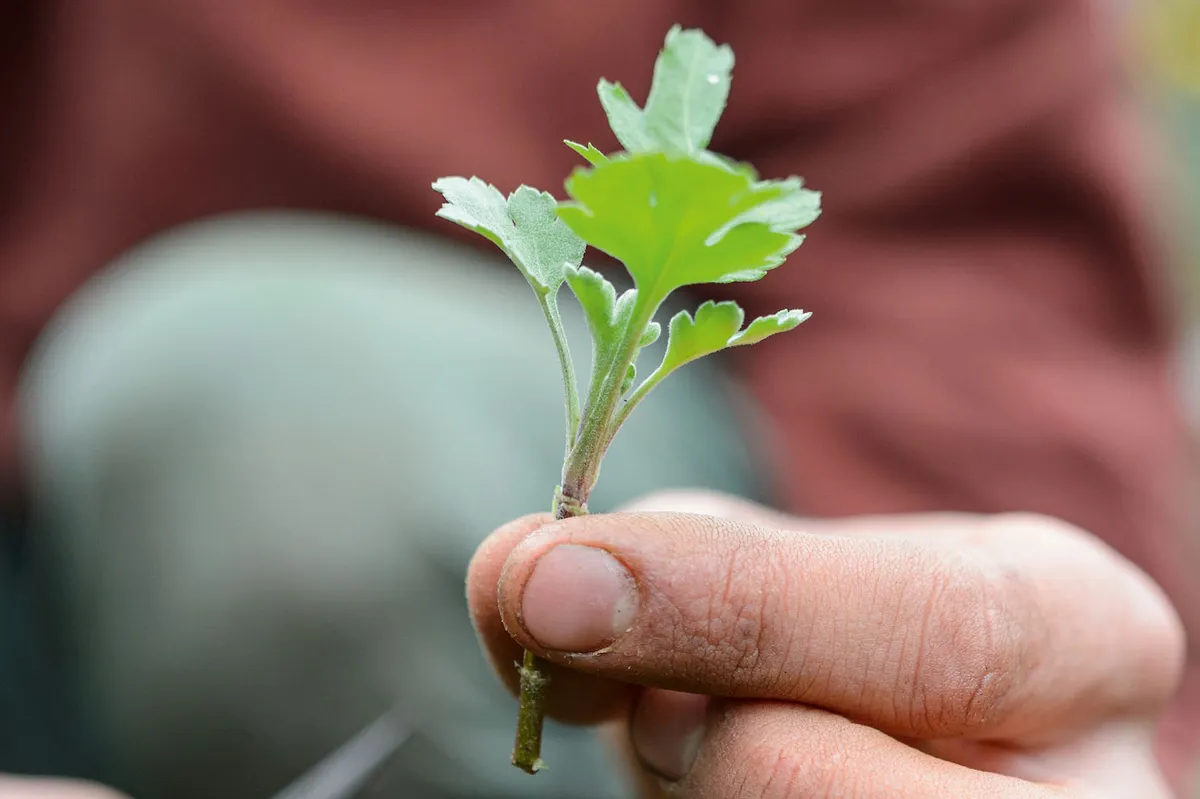
Ensure the stem cutting is clean with no ragged edges or tears, which may risk rot entering and any larger remaining leaves can be cut in half to further reduce transpriation.
4
Insert your stem into a pot
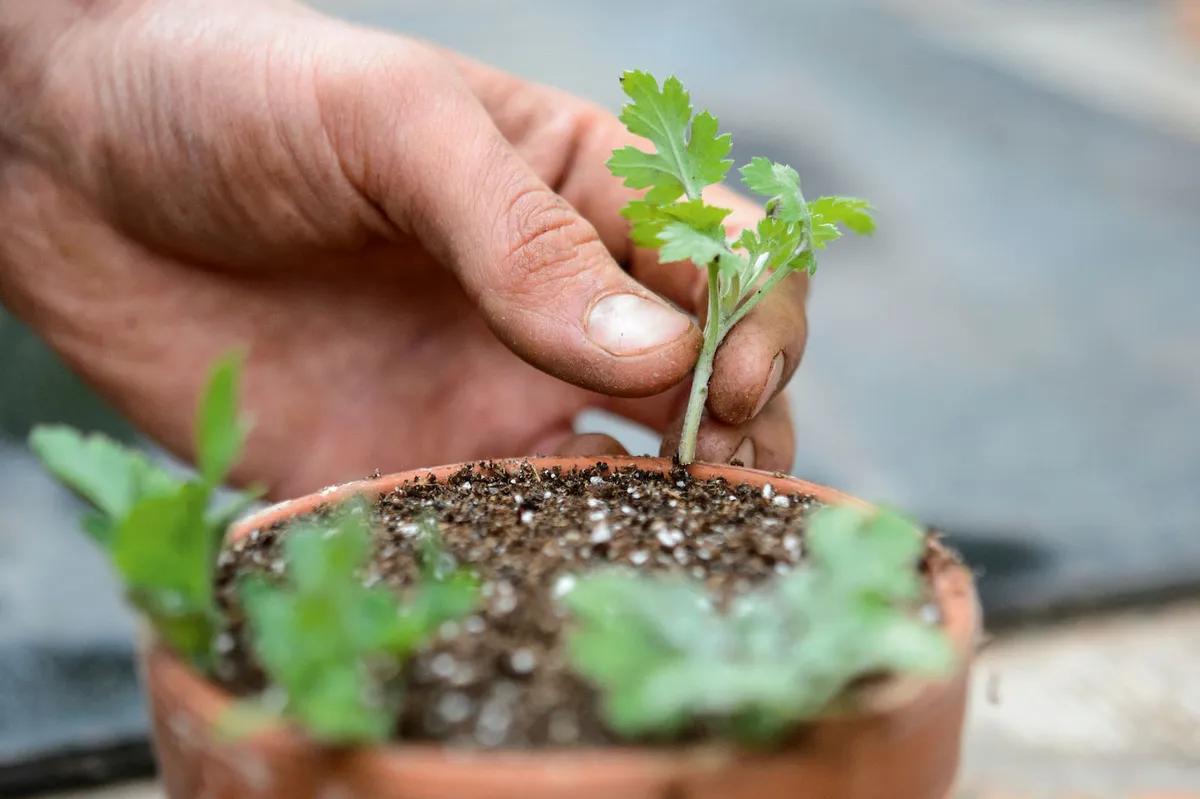
Trimmed cuttings should be inserted around the edge of a terracotta pot filled with a free-draining cutting compost. The terracotta is breathable and allows for more oxygen to reach the active site of rooting.
5
Maintain humidity around the plant
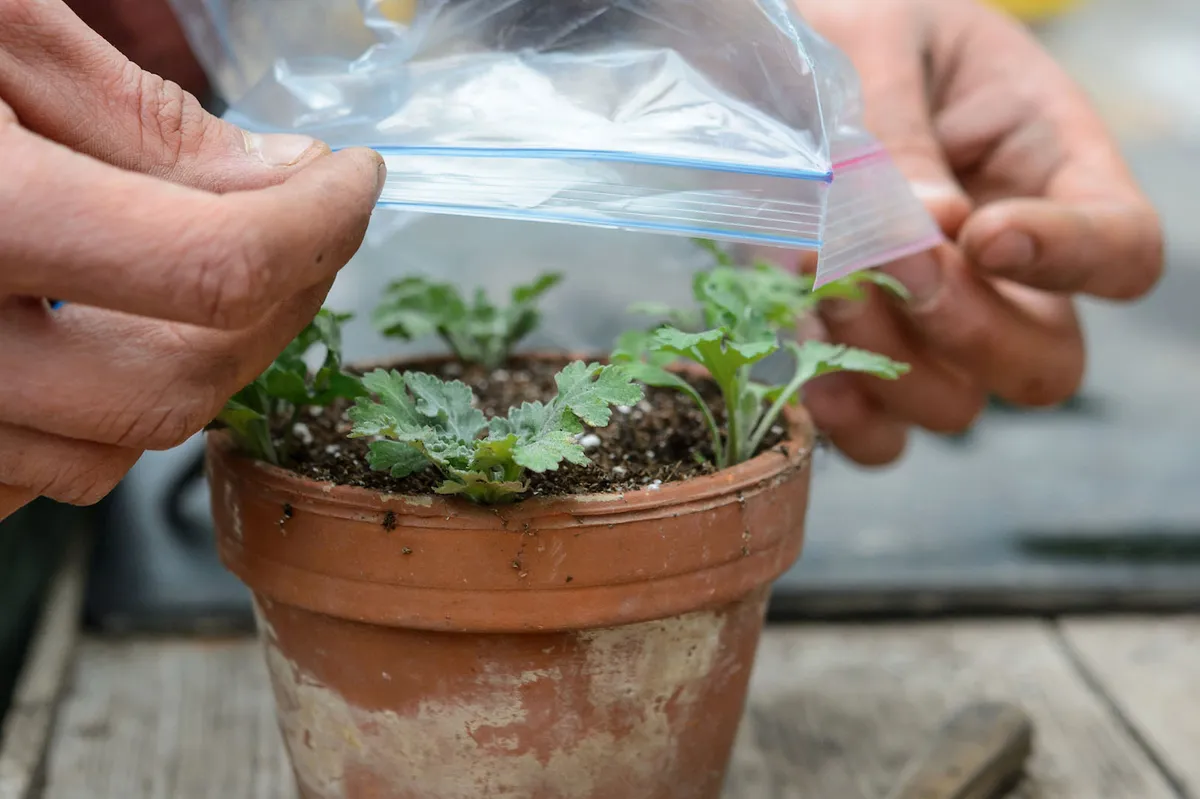
A plastic bag is an effective and inexpensive way to maintain humidity. Once the cuttings have been well watered – using a fine rose, so as to not disturb the cuttings – place the bag over the pot. It is important that the leaves do not touch the inside of the bag as condensation will increase the risk of rot and grey mould.
Head to our guide for our list of the best types of chrysanthemums for your garden, or read our full edit of the best propagation tools and gadgets you can buy online.





